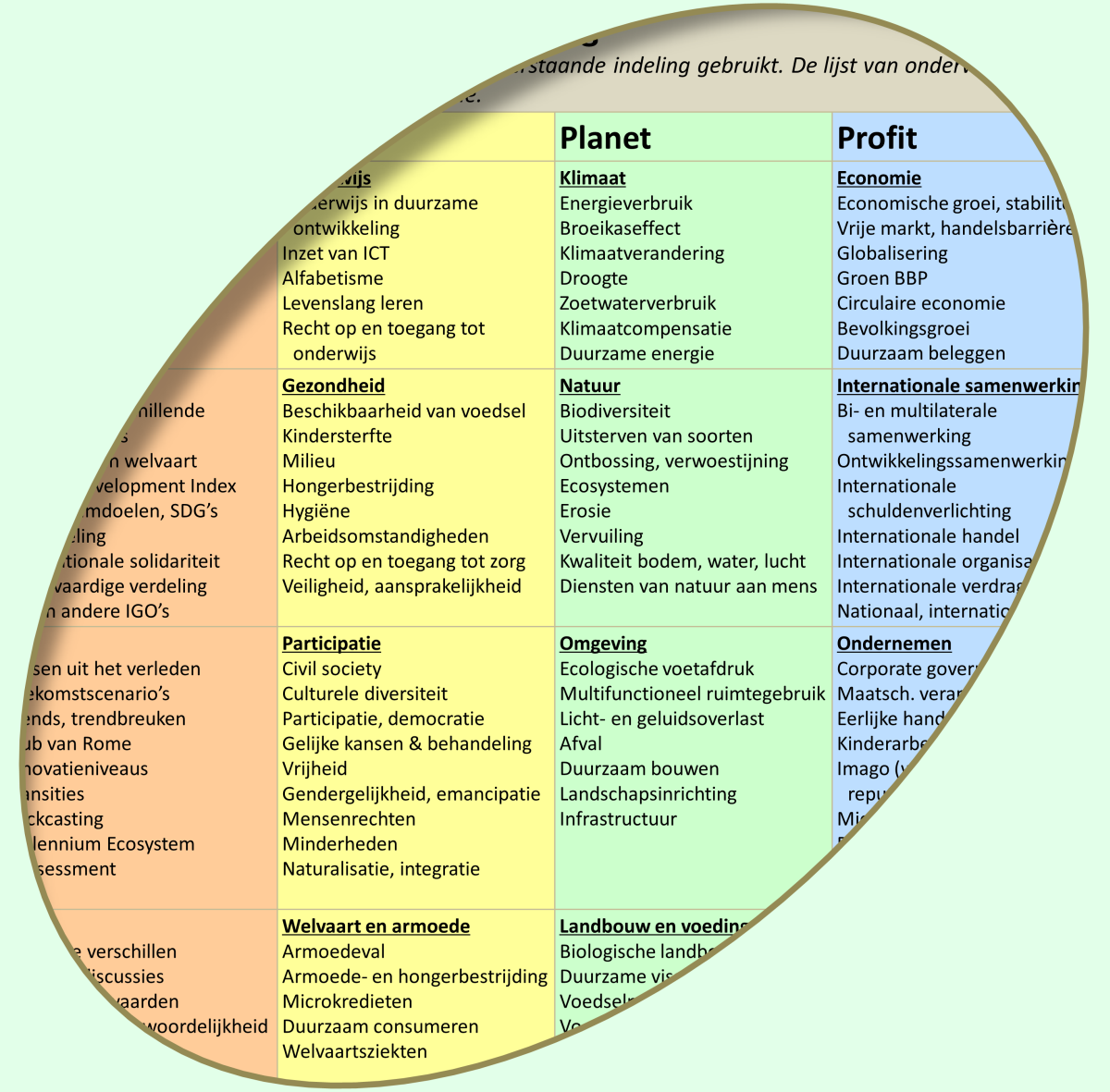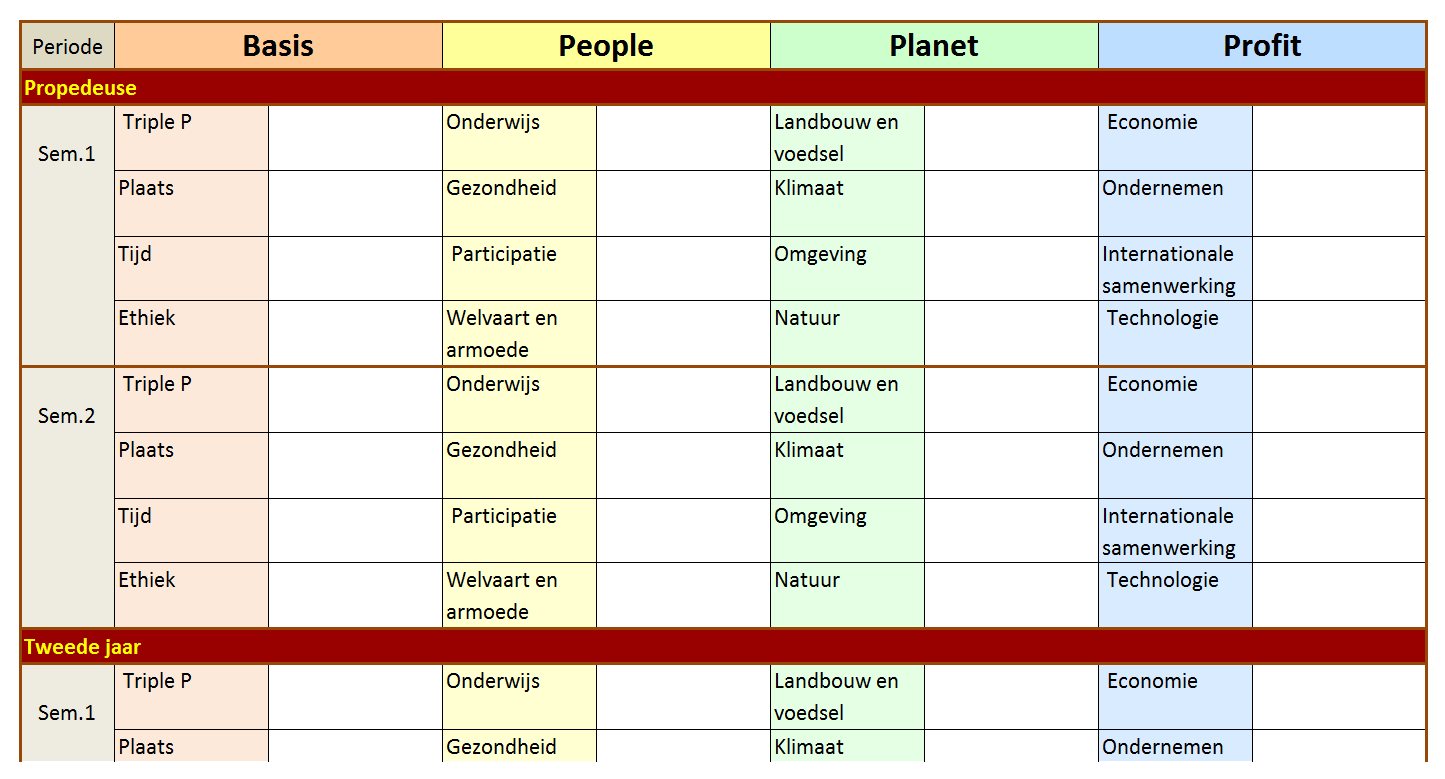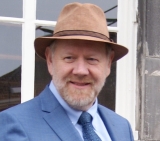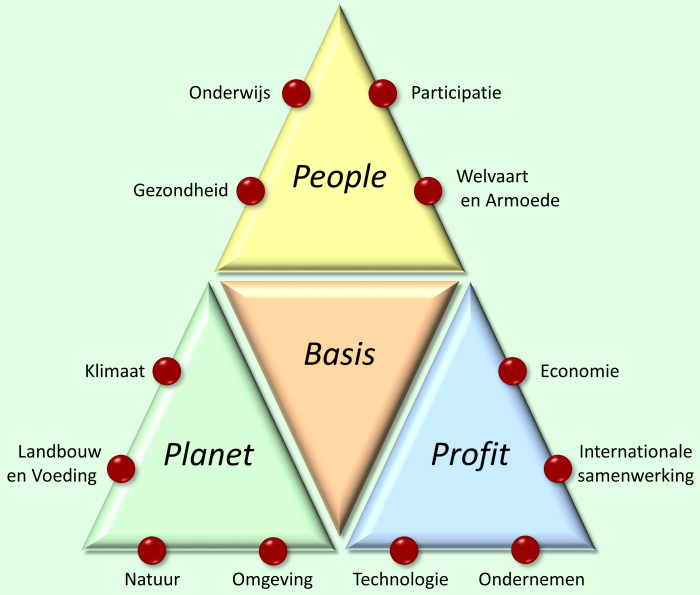SD Curriculum Scan < Previous page Next page >
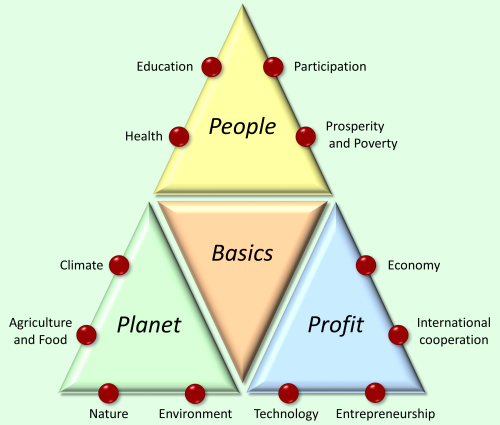 Universities & colleges often want to know: how much attention do we presently give to sustainable development within our curricula?
Universities & colleges often want to know: how much attention do we presently give to sustainable development within our curricula?
This is not an easy question. It's not just a matter of counting the occurrences of the word 'sustainable' in the curriculum descriptions. Usually, many topics are dealt with that have everything to do with SD, but simply aren't described that way. Like: ethics; CSR (corporate social responsibility); environmental issues; empowerment of people; fair trade; human rights; etc, etc.
So how can you tell? How do you know how sustainable a study program is?
A quick scan can be made relatively easy. Just invite a few lecturers to study their own courses and interview their colleagues, and in a couple of hours you may have some kind of first impression. But experiences learn that in most cases, many relevant topics will be missed: they are definitely treated, somewhere in the curriculum, but they are simply not noticed in such a quick scan.
In order to get a realistic overview, a more thorough and structured investigation is needed. This is where the SD Curriculum Scan comes in.
The assessors: Students! (under supervision)
A really thorough scan takes time. A lot of time. Most staff members of universities can't find the time for such an approach. That is why the SD Scan is usually performed by students. Not students of the assessed program. In most cases, up till now they were students of a didactics program at the MSc level, who did the investigation as their graduation project. Such students are able (and even obliged) to spend several months - up to 5 months, depending on the demands of their own university. In such a period, a student assessor is able to investigate a couple of study programs simultaneously.
Of course, these students are not able or allowed to act as independent investigators. They have not yet graduated, although they are not far from it; and so, they need guidance. In terms of another management tool, RESFIA+D: these students possess competence level 2: 'Working under Supervision".
This is where Roorda comes in. Not only did he design the SD Curriculum Scan; he also supervised many students who performed the scan in a variety of universities and colleges.
What the assessor does
As a first step, the assessor investigates the curriculum structure and the education goals (e.g. the competence profile). Detailed descriptions of the program are studied. Next, literally all books and other 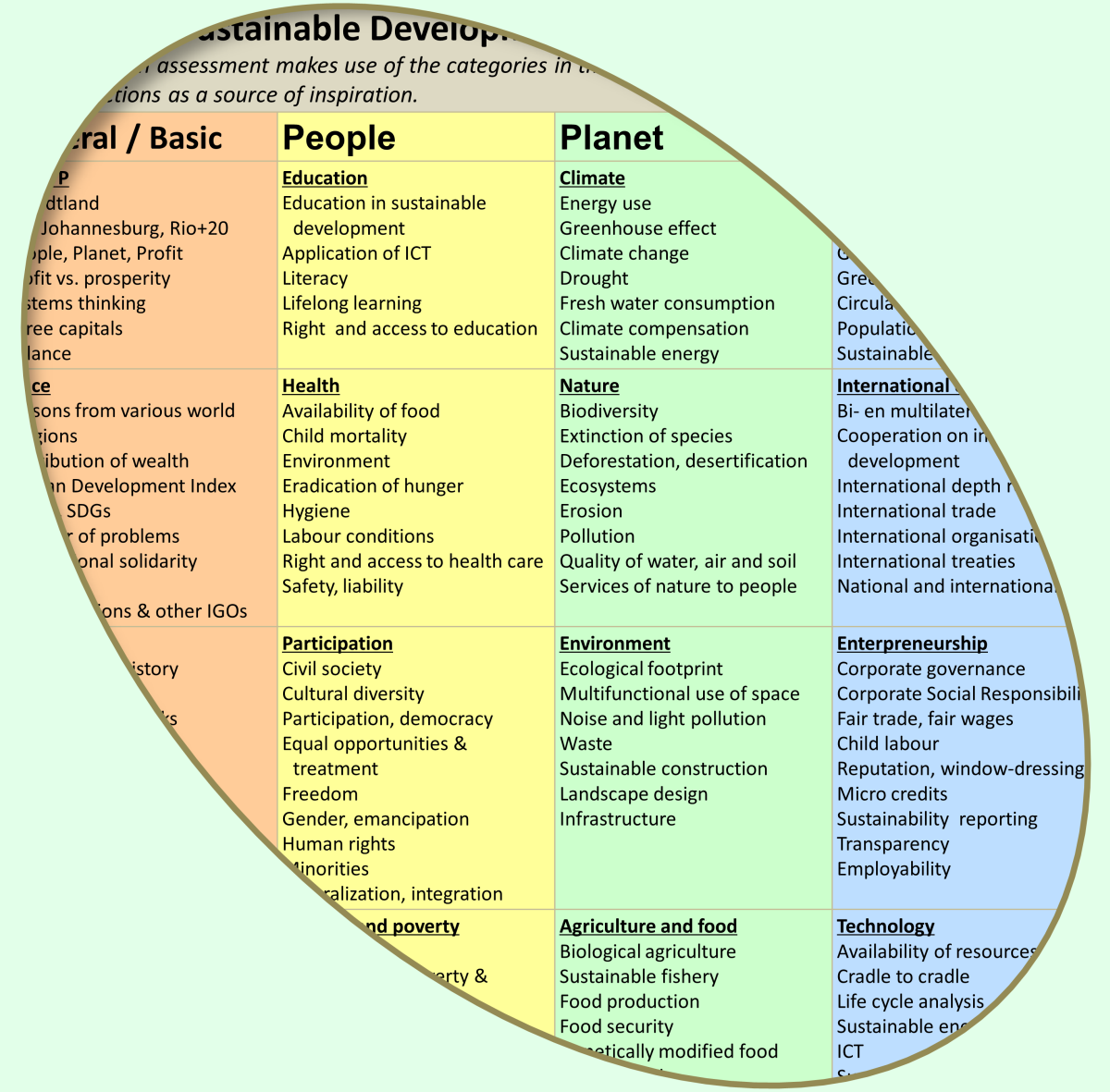 educational materials are screened on the occurrence of SD elements. (See why it takes so much time?)
educational materials are screened on the occurrence of SD elements. (See why it takes so much time?)
How do you recognize such SD elements? That is certainly not easy. For that reason, the student prepares his- of herself by studying one of Roorda's books introducing SD: depending on whether the study program and the student are Dutch, this is the Basisboek Duurzame Ontwikkeling or Fundamentals of Sustainable Development.
Besides, an "inspiration table" is available for the student assessor. A part of this table is shown to the right. In this table, 16 groups of SD topics are discerned, divided over four main categories: Basics; People; Planet; and Profit.
The table is of course far from complete; it is totally impossible to create a 'complete' list of SD topics. Nevertheless, the table helps the assessor to discover sustainable elements in the study materials that are investigated.
Based on the conclusions of this first round, a draft 'map' of the curriculum is drawn. This map looks like the image below.
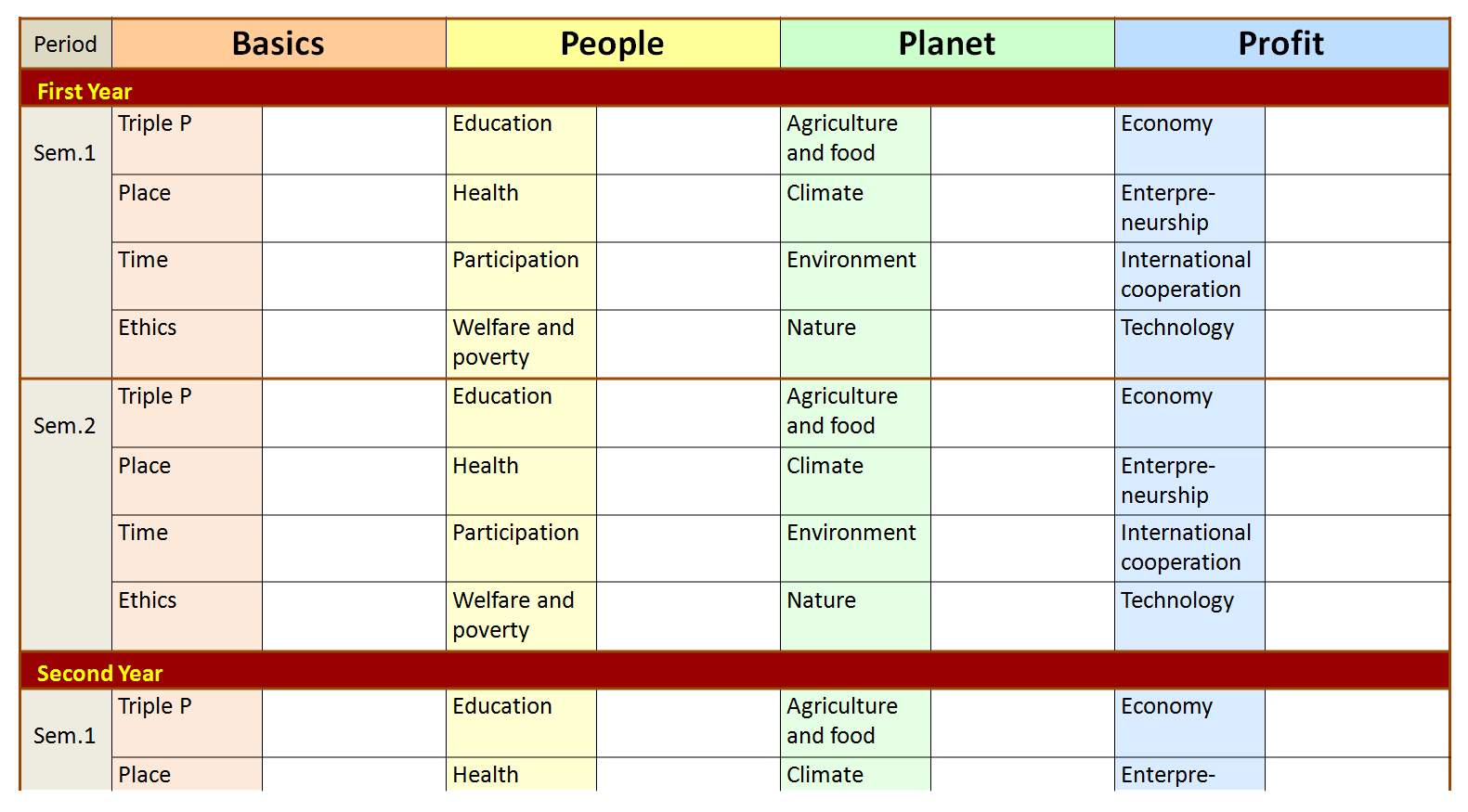
Equipped with this map, the second round of the investigation starts. In this round, the assessor interviews the education manager(s) and all lecturers, professors, teachers, instructors, or whatever they may be called: all those who are responsible for, or contribute to the teaching process. Each of them is invited to explain their contributions to SD in the curriculum.
As a preparation to these interviews, it may be necessary to explain the concept of SD to the education team. This is done e.g. in a study day for the staff; sometimes by the student him- or herself; sometimes by the assessment supervisor - or both together.
The third investigation stage consists of interviews with students of the assessed program. It is important to check all claims and assertions made by the teaching staff; it would be no exception if the students experience things quite differently.
Based on the interviews, the curriculum 'map' is redesigned, and a draft report is written. Both contain three main elements:
(1) An overview of which SD topics are present within the curriculum, and where and when are they treated;
(2) An overview of the relations between those topics; in other words: information about the complex curriculum structure, focusing on SD;
(3) An overview of 'white spots', i.e. of missed opportunities, both regarding the topics and the structured relations between them.
In the fourth step of the investigation, based on the second draft of the map and on the draft report, the conclusions are discussed with key members of the staff and the management. Based on this check, the map and the report are improved once again, after which an overview of conclusions and recommendations is added, and the report is made final.
As a conclusion of the assessment, the results are presented and discussed during a meeting of the curriculum team, and the map and the report are handed over.
